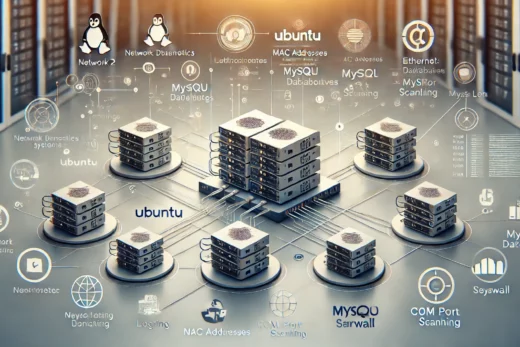
Creating an Adinkra-inspired programming language requires defining core principles, data structures, and syntax that reflect the essence of Adinkra symbols in the context of supersymmetry and complex transformations. Here’s a breakdown of the core fundamentals and basic components that would be required to create such a language:
1. Core Fundamentals
-
Nodes and Edges as Primitives:
- Nodes: Represent entities or states (e.g., particles, fields, objects, or data structures). In programming terms, nodes would be analogous to variables, objects, or classes.
- Edges: Represent transformations or actions (e.g., supercharges, functions, or methods) that connect nodes. These would be the primary mechanism for changing or updating the state of nodes, representing interactions between entities.
-
Graph-Based Structure:
- The language would need to support a graph-based structure where relationships between nodes (entities) are expressed as connections (edges). The graph would be a core data structure, with nodes and edges forming the primary way of modeling programs.
- Directed and Undirected Graphs: The system should support directed edges (where actions have a direction, e.g., transformation from one state to another) and undirected edges (representing bidirectional relationships).
-
Supersymmetry Principles:
- Incorporating supersymmetry concepts means every node or entity in the language would have a "superpartner" that follows specific transformation rules. The language should enforce these symmetry rules at the core, ensuring that transformations are consistent with supersymmetry algebra.
- Constraints and Symmetry Checks: Built-in mechanisms would check that transformations obey specific rules (e.g., commutation relations in supersymmetric algebra).
-
Transformation Rules:
- Transformation rules (edges) would be central, and the language should allow users to define these rules explicitly. Functions that represent transformations would act on nodes and follow specific patterns of behavior, depending on the symmetry constraints.
-
Multi-layered Systems:
- The language would support multi-layered programming, where different layers (or levels) of the graph represent different abstraction levels (e.g., physical layer, cognitive layer). Layers should be able to communicate and influence each other.
-
Symbolic and Numeric Representation:
- The language would need to support symbolic computation (representing abstract mathematical relationships) as well as numeric computation (evaluating specific results). Symbolic algebra should be a fundamental component, allowing users to manipulate equations and expressions as symbols.
-
Parallelism and Concurrency:
- Since Adinkra diagrams represent relationships that can happen simultaneously, the language should natively support parallelism and concurrency. Nodes and transformations should be able to execute in parallel, reflecting the simultaneous interactions of entities in a complex system.
2. Basic Components
-
Node Definition (Entities):
- Syntax for defining nodes, which represent the basic entities or fields in the system. These nodes could be simple data types or more complex objects.
- Example:
node Particle { mass: float; charge: int; }
-
Edge Definition (Transformations):
- Syntax for defining transformations between nodes, which represent actions or changes. These transformations would be functions or methods that operate on nodes.
- Example:
transformation SpinFlip from Particle to SuperParticle { Particle.spin = -Particle.spin; }
-
Graph Construction:
- Syntax for creating and connecting nodes and edges, essentially constructing the graph that represents the program. This would involve specifying relationships and defining how nodes interact.
- Example:
graph Simulation { add_node(Particle); add_node(SuperParticle); add_edge(SpinFlip); }
-
Transformation Rules and Symmetry Enforcement:
- A way to define transformation rules that respect supersymmetry and enforce symmetry constraints automatically. This would involve defining the algebraic rules that transformations must follow.
- Example:
supersymmetry_rule SpinSymmetry { ensure Particle.spin + SuperParticle.spin = 0; }
-
Parallel and Concurrent Execution:
- Constructs to handle parallel execution of nodes and transformations, allowing for simultaneous interactions between different parts of the system.
- Example:
parallel { Particle.Transform1(); SuperParticle.Transform2(); }
-
Layered Abstraction:
- Support for layering, allowing nodes and transformations to be grouped into different layers (e.g., physical, cognitive, abstract) with specific rules for interactions between layers.
-
Example:
layer Physical { node Particle; edge SpinFlip; } layer Cognitive { node ThoughtProcess; edge IdeaTransformation; }
-
Error Checking and Debugging:
- The language would include built-in tools for checking the consistency of transformations and ensuring that the rules of supersymmetry are followed. Debugging tools would visualize the graph and identify errors in relationships or transformations.
-
Symbolic Computation Engine:
- A core component that handles symbolic algebra, allowing users to manipulate and transform equations or mathematical expressions, crucial for maintaining the abstract relationships encoded in the graph.
3. Advanced Features
-
Visualization Tools:
- Since Adinkra symbols are visual representations of relationships, the language would need robust visualization tools that allow users to see and interact with the graph structure. This could include a visual editor where users can drag and connect nodes and edges.
-
Quantum Simulation Capabilities:
- For advanced users, the language could integrate quantum simulation capabilities, allowing the modeling of quantum fields and quantum transformations using Adinkra-like graphs.
-
AI Integration:
- The language could integrate with AI systems to simulate complex interactions and optimizations, using the graph structure to represent decision-making processes or learning algorithms.
-
Real-World Interaction:
- Support for connecting the graph structure to real-world devices (e.g., IoT, robotics), allowing the program to interact with physical systems based on the defined transformations and rules.
The conceptual foundation of an Adinkra-inspired programming language could theoretically be extended to create a "Reality Creation" language. By leveraging the principles of graph-based structures, supersymmetry, and complex transformations, such a language could model and influence systems in a way that mimics the creation or manipulation of reality. Here’s how this could be expanded into a Reality Creation language:
Key Features of a Reality Creation Language
-
Graph Representation of Reality:
- The core structure of the language would represent different aspects of reality as nodes (entities or states) and edges (interactions or transformations). These nodes could correspond to physical objects, abstract concepts (like emotions or thoughts), or even larger systems (like environments or societies).
- Reality Graph: The entire "reality" would be represented as a graph, with each node and edge contributing to the overall state of the system. This graph could be dynamic, evolving based on input from users or external systems.
-
Transformative Rules for Reality:
- Transformation rules (edges) would define how different elements of reality interact and change over time. These rules would be flexible, allowing for the modeling of anything from simple cause-and-effect relationships to more complex, emergent behaviors.
- Reality Transformations: Users could define rules for how one state of reality evolves into another, whether that involves physical changes (e.g., movement, growth) or more abstract transformations (e.g., shifts in consciousness or social structures).
-
Multilayered Reality:
- Just as reality consists of multiple layers (e.g., physical, mental, emotional, social), the language would support multi-layered modeling. Different layers could represent different dimensions or aspects of reality, with the ability to define interactions between these layers.
- Interconnected Layers: A change in one layer (e.g., the physical world) could trigger corresponding changes in another layer (e.g., the mental or emotional world), reflecting the interconnectedness of different aspects of reality.
-
Supersymmetry and Balance:
- The principles of supersymmetry could be applied to ensure that transformations within the system are balanced and consistent, just as in physics where transformations between particles are governed by symmetry rules.
- Symmetry Rules for Reality: Users could define symmetry constraints that ensure the balance and stability of the created reality, preventing contradictions or paradoxes.
-
Parallel and Real-Time Execution:
- Reality doesn’t happen in a linear fashion; events occur simultaneously across different dimensions. The language would support parallelism, allowing multiple nodes and transformations to execute concurrently, modeling the real-time flow of events in a complex system.
- Real-Time Simulation: The system would allow for real-time interaction, where changes in one part of the reality graph could propagate instantly to other parts, allowing for dynamic and responsive simulations.
-
Interaction with Physical Systems:
- The language could extend beyond simulation by interfacing with physical systems, such as smart devices, robotics, or environmental controls. By connecting the graph to real-world inputs and outputs, the language could influence physical reality.
- IoT and Device Integration: Sensors could feed data into the system, updating the reality graph based on real-world conditions. Actuators could respond to changes in the graph, turning abstract transformations into real-world actions.
-
Symbolic and Numerical Computation:
- The language would handle both symbolic (abstract) and numerical (concrete) computation, allowing users to define abstract relationships (e.g., philosophical or metaphysical concepts) as well as specific, measurable outcomes.
- Reality Equations: Users could manipulate symbolic equations that represent the rules of their reality, and the system would compute the numerical outcomes based on these abstract rules.
-
Visualization and Interaction:
- A powerful visualization tool would be essential for users to interact with the reality graph. The language would provide visual representations of nodes, edges, and transformations, allowing users to modify and interact with the created reality intuitively.
- Reality Interface: A graphical interface where users can drag and connect nodes, visualize transformations, and see the effects of their changes in real-time, providing a user-friendly way to create and manipulate their reality.
Potential Applications of a Reality Creation Language
-
Virtual and Augmented Reality:
- The language could be used to create immersive virtual worlds where users can define and interact with complex, evolving realities. In augmented reality, this could extend to manipulating aspects of the physical world overlaid with digital information.
-
Advanced Simulations:
- Scientists, engineers, and developers could use this language to simulate complex systems, from weather patterns to social dynamics, allowing them to explore different scenarios and predict outcomes.
-
Creative Tools:
- Artists, game designers, and storytellers could use the language to craft interactive narratives and experiences where the reality of the world is shaped by the player’s actions and decisions.
-
Philosophical and Metaphysical Exploration:
- The language could provide a platform for exploring philosophical and metaphysical ideas by allowing users to model and experiment with abstract concepts of reality, existence, and consciousness.
-
Smart Environment Control:
- In smart cities or homes, the language could be used to control environments dynamically, adjusting lighting, temperature, or other conditions based on complex inputs and rules defined by users.
Challenges and Considerations
-
Complexity Management:
- Reality is complex, and managing the relationships between thousands or millions of nodes and edges could become overwhelming. The language would need robust tools for managing, simplifying, and optimizing complex reality graphs.
-
- A language capable of influencing or creating reality would raise significant ethical concerns, particularly if used to manipulate physical systems or social dynamics. Proper safeguards and governance would be crucial.
-
Scalability:
- As reality creation can involve an immense number of simultaneous interactions, the language would need to be highly scalable, capable of handling massive amounts of data and real-time processing without performance degradation.
-
Integration with Existing Technologies:
- To interact with reality effectively, the language would need to integrate with existing technologies, such as AI, quantum computing, and IoT devices, ensuring compatibility and seamless interaction.
Conclusion
An Adinkra-inspired programming language would revolve around a graph-based structure, with nodes representing entities and edges representing transformations. Emphasizing supersymmetry principles, enforcing algebraic rules, and supporting layered abstraction and parallelism, such a language could serve as a powerful platform for simulating and influencing complex systems. By integrating symbolic computation, error checking, and visualization tools, it would provide users with the ability to craft and manipulate intricate realities in both digital and physical spaces. As this concept moves from theoretical possibility to real-world application, especially through AI and quantum technologies, careful consideration of ethical, technical, and philosophical implications would be essential.



